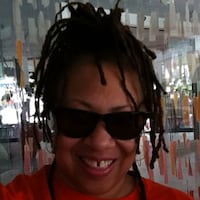William E. Callier Sr. passes around a copy of an old newspaper clipping, his pride still evident decades after he and 15 other men made Atlanta history.
“Bronze Fire-fighters Ready for Action.”
A black-and-white photograph in a 1963 edition of the Atlanta Inquirer newspaper shows 16 smiling African-American men, dressed in the uniform of the Atlanta Fire Rescue Department. They became the city’s first black firefighters in modern times.
“We were probably the best-trained firefighters in the city of Atlanta,” said Callier, 73, the group’s unofficial historian. He recalled how some white supervisors in the academy would ride and drill them mercilessly to break them down. But if the goal was to make them quit, it had the opposite effect.
“You knew you were making history, and you knew that if you failed there would not be others coming behind you,” said William H. Hamer, 75, who joined the department when he was 24 and later made history a second time as the city’s first black fire chief. “You had to be serious.”
The men succeeded in their test under fire. Now, more than half of the city’s firefighters are African-Americans.
Atlanta officials on Monday honored Callier and others half a century after they broke down barriers in what was then one of the city’s most segregated departments.
Eight of the 16 firefighters have been located, and the department believes the rest are dead.
A metal plaque was erected on the site of Fire Station No. 16 at 1048 Joseph E. Boone Blvd. containing the names of the men and the seven African-American women later hired as firefighters in 1977. Also saluted there is Theodore “Tiger” Flowers, the first African-American middleweight champ, on whose property the fire station was built.
Well-wishers packed the historic fire station, including Mayor Kasim Reed, boxer Evander Holyfield and the Rev. C.T. Vivian, a civil rights legend.
Liz Summers, a retired battalion chief, said she was once told that she wasn’t wanted in the department. But she worked hard and worked her way up the ladder.
Atlanta Councilman Michael Julian Bond, who spearheaded the effort, wasn’t even born at the time, but he said it was important then that the black community see themselves reflected in the faces of firefighters and police officers in their neighborhoods. (The first African-American police officers went on duty on Auburn Avenue in April 1948, according to the Atlanta Police Department.)
“It was a tremendous source of pride,” he said. “Every child in elementary school wants to be a fireman, police officer, doctor or Indian chief. To see someone in that role who looks like you meant that you could do it, also.”
It was 1963 — the height of the civil rights movement. Later that same year, the Rev. Martin Luther King Jr. would help lead the March on Washington seeking social and economic equality and deliver his famous “I Have A Dream” speech. Against that backdrop, weeks later, the nation would be shocked by a church bombing in Birmingham, Ala., that killed four young black girls attending Sunday school.
Under pressure from the African-American community in Atlanta, then-Mayor Ivan Allen authorized the hiring of African-American firefighters.
It was no easy task for those 16 men.
“We realized the challenges before we were even employed,” said Emmett Smith, who ran a radio and television repair shop and drove a cab before joining the department.
Although the Police Department had been integrated earlier, the Fire Rescue Department presented additional challenges.
Not only did firefighters work together, they lived, ate, showered and slept together.
‘There was greater resistance because you’re coming up against this taboo of being so close physically to each other,” said Cliff Kuhn, an associate professor of history at Georgia State University. “This was the final dimension of segregated life.”
The men were assigned to Fire Station 16, an all-black unit with the exception of white supervisors. The black community was ecstatic. Hamer said it wasn’t unusual to arrive at a fire and have residents applaud and cheer. Some firefighters rode the bus to work and other black passengers would come up and say how proud they were.
Later, some of the original 16 worked in integrated fire stations, which is when many of the problems occurred.
James E. Maddox, who now lives in Sharpsburg, grew up near a fire station. The firefighters there kept a monkey as a pet.
“They would treat that monkey better than they would the little black children who would come around,” he said. ‘That kind of prejudice doesn’t die easily.”
Harvey Bowens told a story of a supervisor once using a racial slur. Others spoke of incidents of white firefighters refusing to use the same cabinet to put their dishes in or having firefighters from other stations show reluctance to fight fires with them. Callier said one time he came into the kitchen area to eat and the other firefighters got up and walked out when he sat with them.
That made Callier and the others work even harder.
“We determined we weren’t going to give up.”
About the Author
The Latest
Featured


